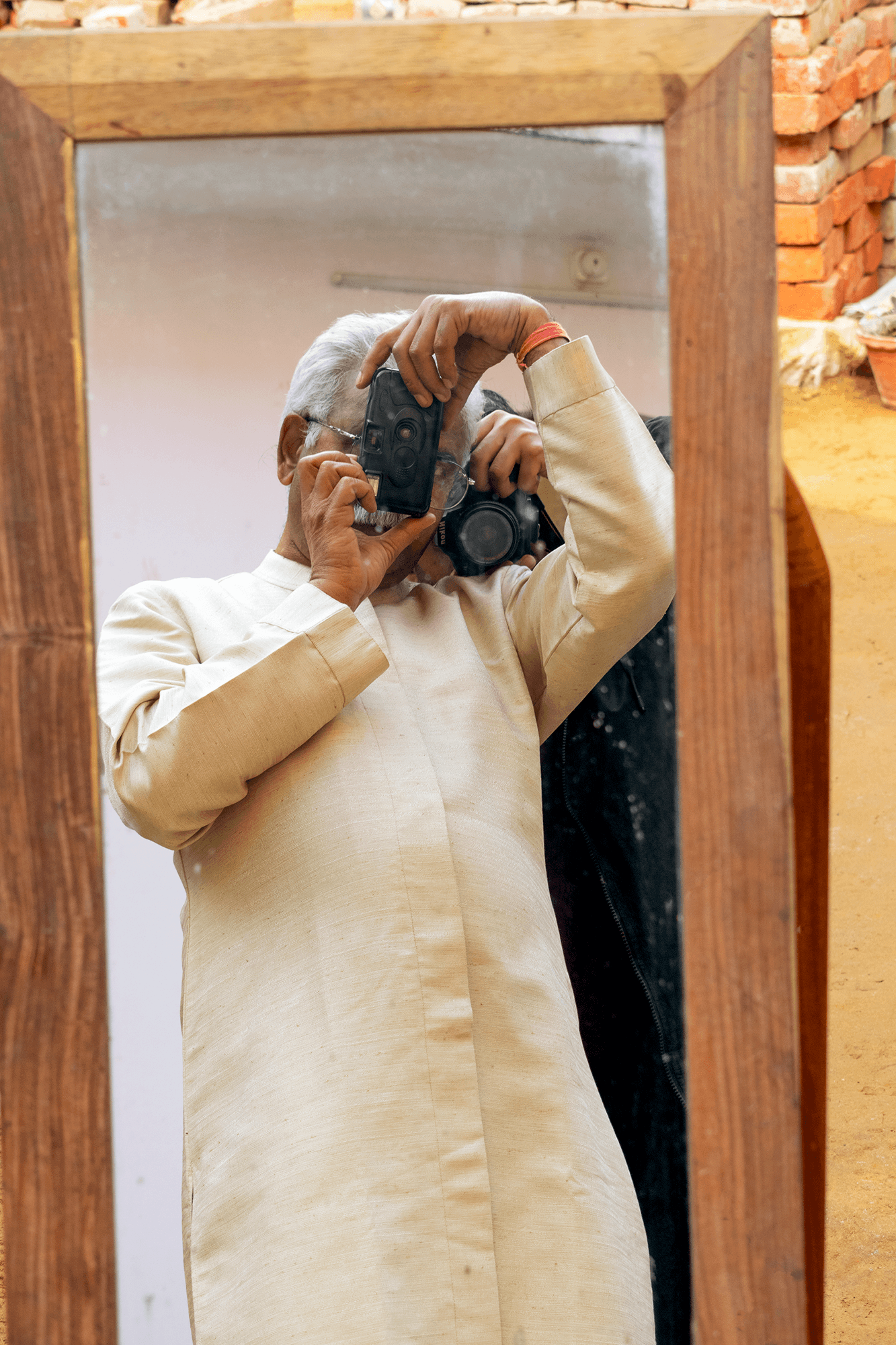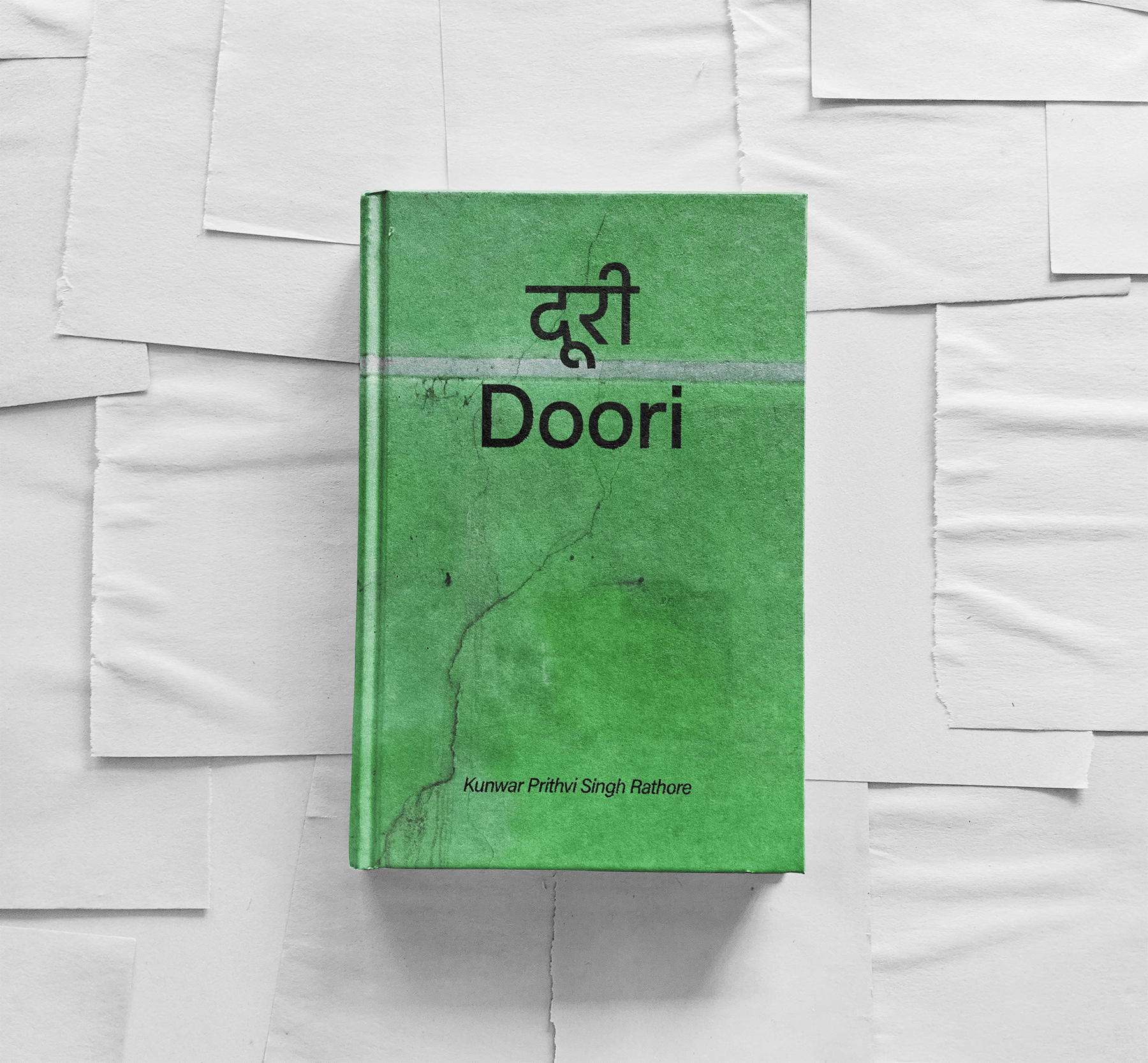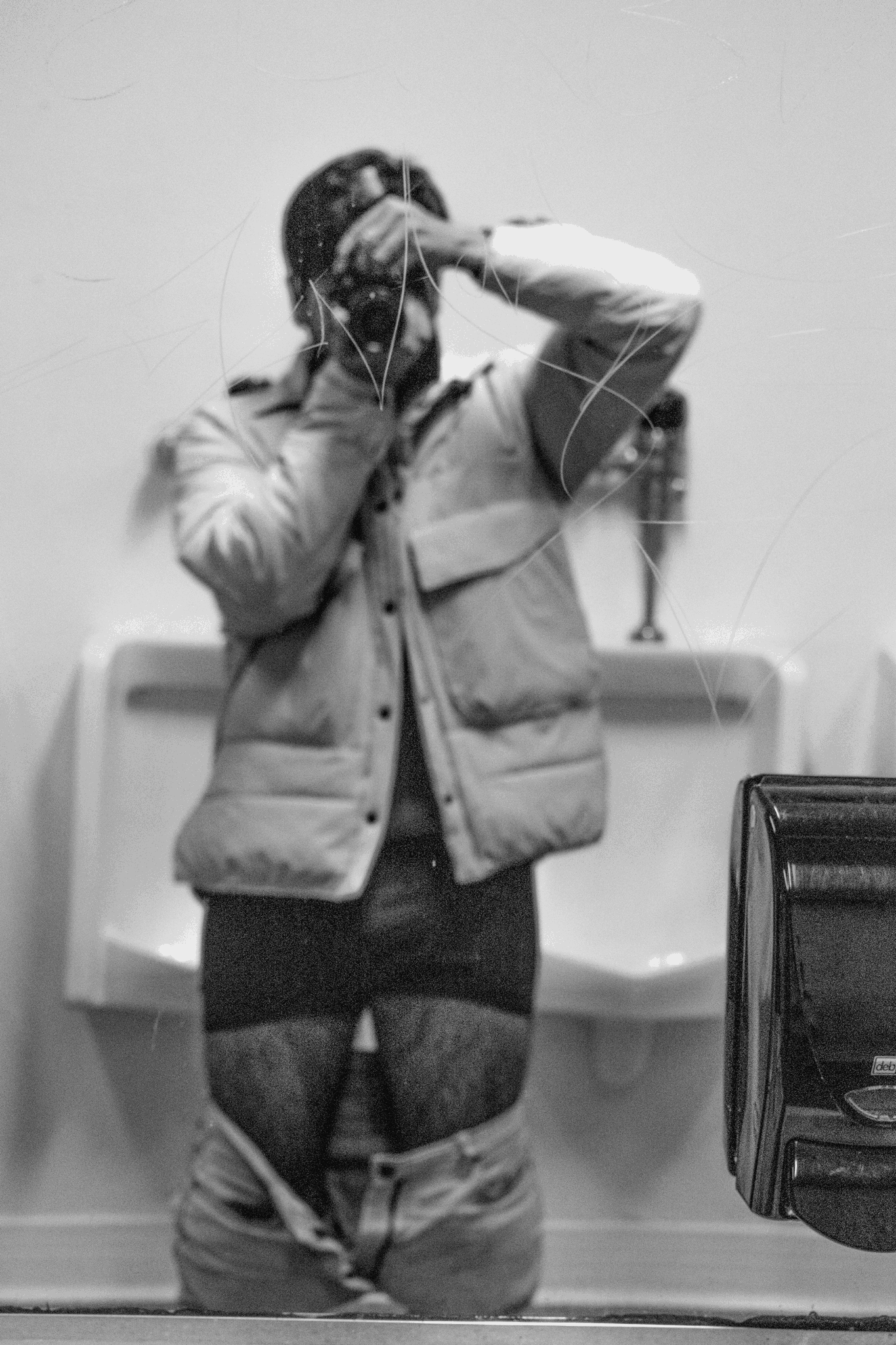We’re excited to introduce you to the always interesting and insightful Kunwar Prithvi Singh Rathore. We hope you’ll enjoy our conversation with Kunwar Prithvi below.
Kunwar Prithvi, thanks for taking the time to share your stories with us today Can you talk to us about a project that’s meant a lot to you?
The most meaningful project I’ve worked on is my recent photobook titled Doori, which means “distance” in Hindi, my native language. This project explores the emotional distance between my father and me, shaped by societal norms that have contributed to this gap.
It delves into broader themes of patriarchy and toxic masculinity within the context of a traditional middle-class South Asian family—specifically my own. The work highlights the complex power dynamics that often strain relationships within such families.
My father has always had a deep passion for art, and ironically, he is the very reason I pursued a career in the arts. However, unlike my elder brother, who fulfills the role of the ideal son my father envisioned, I’ve never adhered to his expectations of what it means to be a “man” in our society. My brother plays an important role as a mediator between my father and me, understanding both of our perspectives.
I document my father and brother in various settings in India, wearing ethnic clothing and jewelry designed by my father. I also make photographs of men that I’ve gotten to know in New York, creating a contrast between familial and other relationships.
A unique aspect of this project involves incorporating archival family images I discovered in India, which contrast the innocence and togetherness of photographs in that vernacular genre with the pictures of my life as an adult that are more subjective and less conventional.
Through Doori, I challenge the expectations of men like my father, who, despite their creativity and talent, struggle to express vulnerability or appreciation toward their sons, or other family members.
I have many questions for my father, and I feel the answers are revealed through my photographs. This allows me to see him not just as a paternal figure, but as a human being with his own life story. Ultimately, this work humanizes him, uncovering his emotional depth and unspoken experiences.

Great, appreciate you sharing that with us. Before we ask you to share more of your insights, can you take a moment to introduce yourself and how you got to where you are today to our readers.
I grew up in a small town in India and spent 22 years of my life there. In 2022, I moved to New York to pursue my MFA in Photography at Pratt Institute. Prior to that, I completed my undergraduate degree in Fashion Communication at the National Institute of Fashion Technology.
From a young age, I was always drawn to creativity. I painted, took photographs with my mobile phone, and engaged in DIY crafts with my brother, who is also very creative. We often spent summers making things together, like cardboard airplanes.
A pivotal moment for me was when my father bought my sister and me our first DSLR camera during high school. This sparked my deep interest in digital photography, and I still use that same camera, a Nikon D3300. While studying Communication Design in my undergraduate program, I explored various facets of design, including graphic design, styling, and fashion photography.
I’ve worked with fashion brands and done editorial projects, but I realized early on that I didn’t want to pursue a corporate job. I wanted to seize the opportunity to become an artist, have my own studio, and be a part of gallery shows in New York.
I also feel a strong obligation to address themes such as sexuality, queerness, patriarchy, male toxicity, and the role of women in Indian conservative society through my work. Growing up with three older sisters, I witnessed the limitations they faced compared to the freedoms my brother and I enjoyed. I recognize my privilege in having the opportunity to pursue my artistic ambitions, especially when so many others in similar situations lack the resources or opportunities to do so.
I take pride in my connection to my cultural heritage and the traditions from India, as well as the stories I grew up hearing from my father. Incorporating these elements into my work is important to me. While I aim to resonate with a broad audience, especially South Asian queer individuals and those grappling with family dynamics and identity, I initially created this work for myself. It was crucial for me to confront my own truths.
Ultimately, I hope my work connects with others on a meaningful level and provides a voice for those who may feel marginalized.

Learning and unlearning are both critical parts of growth – can you share a story of a time when you had to unlearn a lesson?
One key lesson I had to unlearn is that “hard work and creating good art” are the most important factors for success. While these elements are undeniably important, I’ve come to realize that networking and building relationships are also crucial.
When I moved to New York to pursue my MFA, I initially struggled to step out of my studio and connect with others, which affected my mood and my work. My mentor advised me to engage more with the art community by attending gallery openings and events. This approach allowed me to meet various artists and professionals, ultimately helping me find my community.
It’s essential to understand that, although you may create beautiful work, it needs to be seen. Visibility relies on building connections; without a supportive community, your efforts can go unnoticed. To thrive, you need to participate in events, attend your peers’ openings, and share your ideas. This engagement opens doors to a wider audience and more opportunities to present your work.

Any resources you can share with us that might be helpful to other creatives?
There are several resources I wish I had known about in the early stages of my career as an artist. Organizations like the New York Foundation for the Arts (NYFA) and Substack offer a wealth of open call opportunities for exhibitions, as well as grant applications from around the world. While they focus on supporting artists in New York, their resources are not limited to this region.
I understand that the competition is fierce, with many artists constantly applying for these opportunities. However, consistency is key. You need to be proactive and utilize all available resources. There are people dedicated to making the art world more navigable and accessible, and it’s important to take advantage of the opportunities they provide.
Contact Info:
- Website: https://www.kprithvi.com
- Linkedin: https://www.linkedin.com/in/kprithvisingh/








